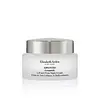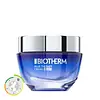What's inside
What's inside
 Key Ingredients
Key Ingredients

 Benefits
Benefits

 Concerns
Concerns

 Ingredients Side-by-side
Ingredients Side-by-side

Water
Skin ConditioningDimethicone
EmollientGlycerin
HumectantButylene Glycol
HumectantCetearyl Alcohol
EmollientIsostearyl Alcohol
EmollientCaprylic/Capric Triglyceride
MaskingCeteth-20 Phosphate
CleansingButylene Glycol Cocoate
EmulsifyingPolymethylsilsesquioxane
Ammonium Acryloyldimethyltaurate/Vp Copolymer
Acetyl Tetrapeptide-11
Skin ConditioningAcetyl Tetrapeptide-9
Skin ConditioningAmylopectin
Butyrospermum Parkii Butter
Skin ConditioningCaprylyl Glycol
EmollientCarbomer
Emulsion StabilisingCeramide AP
Skin ConditioningCeramide EOP
Skin ConditioningCeramide NP
Skin ConditioningCeteth-20
CleansingCholesterol
EmollientDicetyl Phosphate
EmulsifyingDimethyl Isosorbide
SolventDisodium EDTA
Ethylcellulose
Hydroxyethyl Acrylate/Sodium Acryloyldimethyl Taurate Copolymer
Emulsion StabilisingIsohexadecane
EmollientLauryl PEG-9 Polydimethylsiloxyethyl Dimethicone
Skin ConditioningLeontopodium Alpinum Callus Culture Extract
AntioxidantLithothamnion Calcareum Extract
Skin ConditioningMaris Sal
Skin ConditioningPEG-100 Stearate
PEG-40 Hydrogenated Castor Oil
EmulsifyingPentylene Glycol
Skin ConditioningPhytosphingosine
Skin ConditioningPolysorbate 20
EmulsifyingPolysorbate 60
EmulsifyingSodium Carrageenan
Emulsion StabilisingSodium Lauroyl Lactylate
EmulsifyingTheobroma Cacao Seed Butter
EmollientTocopheryl Acetate
AntioxidantTromethamine
BufferingXanthan Gum
EmulsifyingParfum
MaskingPhenoxyethanol
PreservativeWater, Dimethicone, Glycerin, Butylene Glycol, Cetearyl Alcohol, Isostearyl Alcohol, Caprylic/Capric Triglyceride, Ceteth-20 Phosphate, Butylene Glycol Cocoate, Polymethylsilsesquioxane, Ammonium Acryloyldimethyltaurate/Vp Copolymer, Acetyl Tetrapeptide-11, Acetyl Tetrapeptide-9, Amylopectin, Butyrospermum Parkii Butter, Caprylyl Glycol, Carbomer, Ceramide AP, Ceramide EOP, Ceramide NP, Ceteth-20, Cholesterol, Dicetyl Phosphate, Dimethyl Isosorbide, Disodium EDTA, Ethylcellulose, Hydroxyethyl Acrylate/Sodium Acryloyldimethyl Taurate Copolymer, Isohexadecane, Lauryl PEG-9 Polydimethylsiloxyethyl Dimethicone, Leontopodium Alpinum Callus Culture Extract, Lithothamnion Calcareum Extract, Maris Sal, PEG-100 Stearate, PEG-40 Hydrogenated Castor Oil, Pentylene Glycol, Phytosphingosine, Polysorbate 20, Polysorbate 60, Sodium Carrageenan, Sodium Lauroyl Lactylate, Theobroma Cacao Seed Butter, Tocopheryl Acetate, Tromethamine, Xanthan Gum, Parfum, Phenoxyethanol
Water
Skin ConditioningHydrogenated Polyisobutene
EmollientGlycerin
HumectantButylene Glycol
HumectantDimethicone
EmollientCetyl Alcohol
EmollientGlyceryl Stearate
EmollientZea Mays Starch
AbsorbentElaeis Guineensis Oil
EmollientParaffinum Liquidum
EmollientPEG-100 Stearate
Cera Alba
EmollientSorbitol
HumectantMyristyl Myristate
EmollientZea Mays Oil
EmulsifyingPEG-14m
Emulsion StabilisingCera Microcristallina
Emulsion StabilisingParaffin
PerfumingAlgae
Skin ConditioningSorbitan Tristearate
EmulsifyingGlyceryl Acrylate/Acrylic Acid Copolymer
HumectantDimethyl Isosorbide
SolventIsohexadecane
EmollientLaminaria Ochroleuca Extract
Skin ConditioningSodium Hydroxide
BufferingMoringa Oleifera Seed Extract
Skin Conditioning2-Oleamido-1,3-Octadecanediol
Skin ConditioningPhenoxyethanol
PreservativePrunus Armeniaca Kernel Oil
MaskingAdenosine
Skin ConditioningChlorphenesin
AntimicrobialDisodium EDTA
Propylene Glycol
HumectantHydroxypropyl Tetrahydropyrantriol
Skin ConditioningCapryloyl Salicylic Acid
ExfoliatingVitreoscilla Ferment
Skin ConditioningPassiflora Edulis Seed Oil
EmollientXanthan Gum
EmulsifyingMaltitol
HumectantPentaerythrityl Tetra-Di-T-Butyl Hydroxyhydrocinnamate
AntioxidantOctyldodecanol
EmollientAcrylamide/Sodium Acryloyldimethyltaurate Copolymer
Emulsion StabilisingPolysorbate 80
EmulsifyingOryza Sativa Bran Oil
EmollientParfum
MaskingWater, Hydrogenated Polyisobutene, Glycerin, Butylene Glycol, Dimethicone, Cetyl Alcohol, Glyceryl Stearate, Zea Mays Starch, Elaeis Guineensis Oil, Paraffinum Liquidum, PEG-100 Stearate, Cera Alba, Sorbitol, Myristyl Myristate, Zea Mays Oil, PEG-14m, Cera Microcristallina, Paraffin, Algae, Sorbitan Tristearate, Glyceryl Acrylate/Acrylic Acid Copolymer, Dimethyl Isosorbide, Isohexadecane, Laminaria Ochroleuca Extract, Sodium Hydroxide, Moringa Oleifera Seed Extract, 2-Oleamido-1,3-Octadecanediol, Phenoxyethanol, Prunus Armeniaca Kernel Oil, Adenosine, Chlorphenesin, Disodium EDTA, Propylene Glycol, Hydroxypropyl Tetrahydropyrantriol, Capryloyl Salicylic Acid, Vitreoscilla Ferment, Passiflora Edulis Seed Oil, Xanthan Gum, Maltitol, Pentaerythrityl Tetra-Di-T-Butyl Hydroxyhydrocinnamate, Octyldodecanol, Acrylamide/Sodium Acryloyldimethyltaurate Copolymer, Polysorbate 80, Oryza Sativa Bran Oil, Parfum
Ingredients Explained
These ingredients are found in both products.
Ingredients higher up in an ingredient list are typically present in a larger amount.
Butylene Glycol (or BG) is used within cosmetic products for a few different reasons:
Overall, Butylene Glycol is a safe and well-rounded ingredient that works well with other ingredients.
Though this ingredient works well with most skin types, some people with sensitive skin may experience a reaction such as allergic rashes, closed comedones, or itchiness.
Learn more about Butylene GlycolDimethicone is a type of synthetic silicone created from natural materials such as quartz.
What it does:
Dimethicone comes in different viscosities:
Depending on the viscosity, dimethicone has different properties.
Ingredients lists don't always show which type is used, so we recommend reaching out to the brand if you have questions about the viscosity.
This ingredient is unlikely to cause irritation because it does not get absorbed into skin. However, people with silicone allergies should be careful about using this ingredient.
Note: Dimethicone may contribute to pilling. This is because it is not oil or water soluble, so pilling may occur when layered with products. When mixed with heavy oils in a formula, the outcome is also quite greasy.
Learn more about DimethiconeDimethyl Isosorbide is a low-irritation solvent that helps deliver actives into your skin. It is created from glucose.
Research shows how well this ingredient works depends on the active and formulation rather than the concentration alone. This means adding more Dimethyl Isosorbide does not guarantee better penetration of ingredients into the skin.
Disodium EDTA plays a role in making products more stable by aiding other preservatives.
It is a chelating agent, meaning it neutralizes metal ions that may be found in a product.
Disodium EDTA is a salt of edetic acid and is found to be safe in cosmetic ingredients.
Learn more about Disodium EDTAGlycerin is already naturally found in your skin. It helps moisturize and protect your skin.
A study from 2016 found glycerin to be more effective as a humectant than AHAs and hyaluronic acid.
As a humectant, it helps the skin stay hydrated by pulling moisture to your skin. The low molecular weight of glycerin allows it to pull moisture into the deeper layers of your skin.
Hydrated skin improves your skin barrier; Your skin barrier helps protect against irritants and bacteria.
Glycerin has also been found to have antimicrobial and antiviral properties. Due to these properties, glycerin is often used in wound and burn treatments.
In cosmetics, glycerin is usually derived from plants such as soybean or palm. However, it can also be sourced from animals, such as tallow or animal fat.
This ingredient is organic, colorless, odorless, and non-toxic.
Glycerin is the name for this ingredient in American English. British English uses Glycerol/Glycerine.
Learn more about GlycerinIsohexadecane is added to enhance texture, emulsify, and to help cleanse. It is an isoparrafin. It is a component of petrolatum.
Due to its large size, Isohexadecane is not absorbed by the skin. Instead, it sits on top and acts as an emollient. Emollients help keep your skin soft and smooth by trapping moisture within.
Isohexadecane is often used in products designed to help oily skin. It is lightweight and non-greasy while helping to moisturize. When mixed with silicones, it gives a product a silky feel.
Learn more about IsohexadecaneParfum is a catch-all term for an ingredient or more that is used to give a scent to products.
Also called "fragrance", this ingredient can be a blend of hundreds of chemicals or plant oils. This means every product with "fragrance" or "parfum" in the ingredients list is a different mixture.
For instance, Habanolide is a proprietary trade name for a specific aroma chemical. When used as a fragrance ingredient in cosmetics, most aroma chemicals fall under the broad labeling category of “FRAGRANCE” or “PARFUM” according to EU and US regulations.
The term 'parfum' or 'fragrance' is not regulated in many countries. In many cases, it is up to the brand to define this term.
For instance, many brands choose to label themselves as "fragrance-free" because they are not using synthetic fragrances. However, their products may still contain ingredients such as essential oils that are considered a fragrance by INCI standards.
One example is Calendula flower extract. Calendula is an essential oil that still imparts a scent or 'fragrance'.
Depending on the blend, the ingredients in the mixture can cause allergies and sensitivities on the skin. Some ingredients that are known EU allergens include linalool and citronellol.
Parfum can also be used to mask or cover an unpleasant scent.
The bottom line is: not all fragrances/parfum/ingredients are created equally. If you are worried about fragrances, we recommend taking a closer look at an ingredient. And of course, we always recommend speaking with a professional.
Learn more about ParfumPeg-100 Stearate is an emollient and emulsifier. As an emollient, it helps keep skin soft by trapping moisture in. On the other hand, emulsifiers help prevent oil and water from separating in a product.
PEGS are a hydrophilic polyether compound . There are 100 ethylene oxide monomers in Peg-100 Stearate. Peg-100 Stearate is polyethylene glycol ester of stearic acid.
Phenoxyethanol is a preservative that has germicide, antimicrobial, and aromatic properties. Studies show that phenoxyethanol can prevent microbial growth. By itself, it has a scent that is similar to that of a rose.
It's often used in formulations along with Caprylyl Glycol to preserve the shelf life of products.
Water. It's the most common cosmetic ingredient of all. You'll usually see it at the top of ingredient lists, meaning that it makes up the largest part of the product.
So why is it so popular? Water most often acts as a solvent - this means that it helps dissolve other ingredients into the formulation.
You'll also recognize water as that liquid we all need to stay alive. If you see this, drink a glass of water. Stay hydrated!
Learn more about WaterXanthan gum is used as a stabilizer and thickener within cosmetic products. It helps give products a sticky, thick feeling - preventing them from being too runny.
On the technical side of things, xanthan gum is a polysaccharide - a combination consisting of multiple sugar molecules bonded together.
Xanthan gum is a pretty common and great ingredient. It is a natural, non-toxic, non-irritating ingredient that is also commonly used in food products.
Learn more about Xanthan Gum